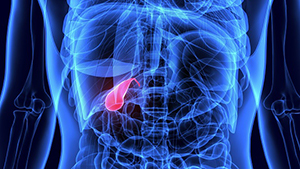Although cancers of the gallbladder or bile ducts are rare, their rates of occurrence are increasing. A recent study published by Ouyang et al in the journal Cancer provided details on the burden of gallbladder and biliary tract cancer across 195 countries and territories from 1990 to 2017.
Determining gallbladder and biliary tract cancer estimates and trends in different global regions can help to guide research priorities and policies for prevention and treatment. With this in mind, a team of scientists examined publicly available information on gallbladder and biliary tract cancer from the Global Burden of Disease project, an ongoing observational study that provides comprehensive burden levels and trends for all major diseases, injuries, and risk factors by region, sex, country, and age.

Photo credit: Getty
Global Trends
Findings from the study indicate that gallbladder and biliary tract cancer incidence increased by 76%, mortality increased by 65%, and disability-adjusted life-years increased by 52% from 1990 to 2017. The researchers also estimated that, globally, there were 210,878 new cases; 173,974 deaths; and 3,483,046 disability-adjusted life-years—the number of years lost from ill health, disability, or early death—due to gallbladder and biliary tract cancer in 2017.
Gallbladder and biliary tract cancer burden varied by sex, region, and age. Certain risk factors were also evident. Globally, an estimated 20.6% and 8.1% of gallbladder and biliary tract cancer–related deaths in females and male patients, respectively, were attributed to high body mass index.
Regions with higher sociodemographic indexes had greater incidence and death rates from gallbladder and biliary tract cancer; however, age‐standardized incidence rates and age‐standardized death rates were lower in these regions. Chile had the highest age‐standardized incidence rate (10.38 per 100,000 population) and age‐standardized death rate (10.43 per 100,000 population) in 2017. Georgia recorded the largest increases in both age-standardized incidence and death rates.
"Gallbladder and biliary tract cancer remains a major health burden worldwide. Our findings may be valuable for policymakers to establish cost-effective methods for the early diagnosis, prevention, and treatment of gallbladder and biliary tract cancer, reducing its modifiable risk factors, and reversing the increasing trend," the study authors concluded.
Disclosure: For full disclosures of the study authors, visit acsjournals.onlinelibrary.wiley.com.

